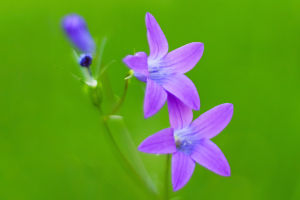Dandelions are a common plant whose lightweight seeds can be carried by the wind, spreading far and wide to propagate. This phenomenon not only attracts nature lovers but also intrigues scientists.
So, how exactly does the flight mechanism of dandelion seeds work?
1. Seed Structure
First and foremost, the dandelion's ability to fly is closely tied to the unique structure of its seeds. The seeds of the dandelion have a tuft of fine, hair-like structures at the top known as the "pappus."
This pappus, though it may appear simple, is key to the seed's flight. It consists of about 100 filaments that spread out like a parachute, providing the seed with a floating platform. These fine hairs effectively slow down the seed’s descent, allowing it to float in the wind for a longer time and travel farther.
Scientists have studied the dandelion’s pappus in detail and found that this “umbrella-like” structure creates tiny vortices in the air. These vortices reduce air resistance, allowing the seed to stay suspended in the air without being immediately pulled down by gravity. This aerodynamic phenomenon is called a “separated vortex,” where the air flows between the pappus filaments and creates a low-pressure zone, enhancing the seed's ability to remain airborne.
2. Aerodynamic Properties
The flight of dandelion seeds is also closely related to the principles of aerodynamics. Due to their extremely lightweight, dandelion seeds can be carried by even the slightest breeze.
Research has shown that the structure of the pappus significantly increases the seed’s "effective surface area," meaning that even a gentle wind is sufficient to keep the seed aloft. The pappus provides greater aerodynamic efficiency compared to a solid object, akin to how a traditional parachute works.
While a traditional parachute relies on large fabric surfaces to catch the air, the dandelion’s pappus, though sparse, makes use of the spaces between its filaments to more efficiently capture air, keeping the seed afloat. This fine structure allows the dandelion seed to descend very slowly, maximizing its flight time and increasing the likelihood that it will be carried far by the wind.
3. The Impact of Wind
How far a dandelion seed can travel mainly depends on external factors such as wind speed and direction.
Seeds are typically blown off the mother plant by a gentle breeze and remain suspended in the air until they are caught by stronger air currents. Because dandelion seeds are extremely light and have a relatively large surface area, they can even travel tens of kilometers in strong winds.
Studies have shown that dandelion seeds can float in near-ground air currents for extended periods. These air currents are typically slow and stable, without the strong turbulence that might quickly ground the seeds.
This mode of flight is somewhat similar to how gliders work: dandelions rely on the buoyancy of air and the stability of airflow rather than mechanical movement to generate propulsion. This wind-dependent mode of seed dispersal allows dandelions to thrive in a variety of ecological environments, ensuring the widespread distribution of their species.
4. Future Applications
The flight principles of dandelion seeds not only fascinate biologists but also inspire innovations in engineering. Researchers have been studying the pappus structure to design more efficient aerodynamic devices, such as biomimetic parachutes and hovering mechanisms for drones.
On a microscopic scale, scientists are also exploring the aerodynamic properties of dandelion seeds in hopes of applying them to future small-scale air devices and sensors.
The flight mechanism of the dandelion seed showcases the intricate design and survival strategies of nature. As scientific research continues, the principles behind the dandelion's flight may find broader applications in engineering and technology in the future.


